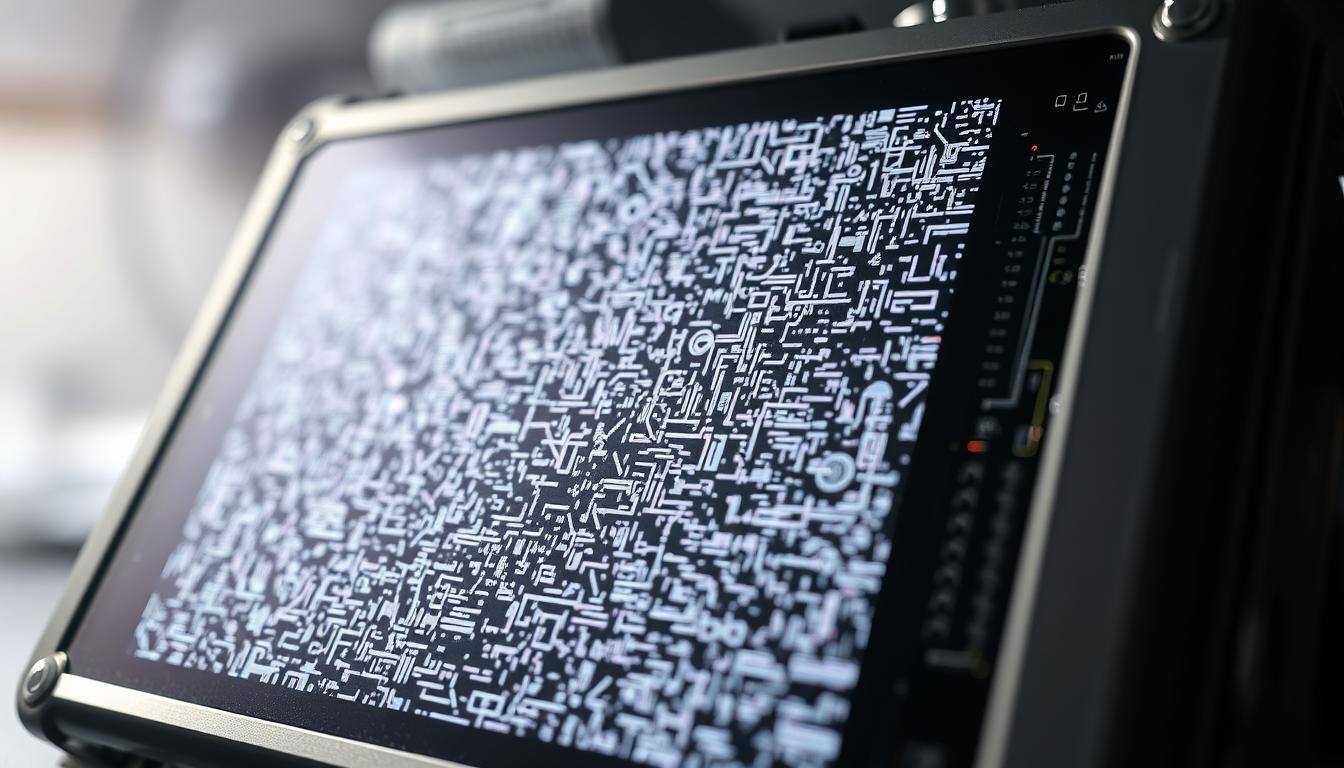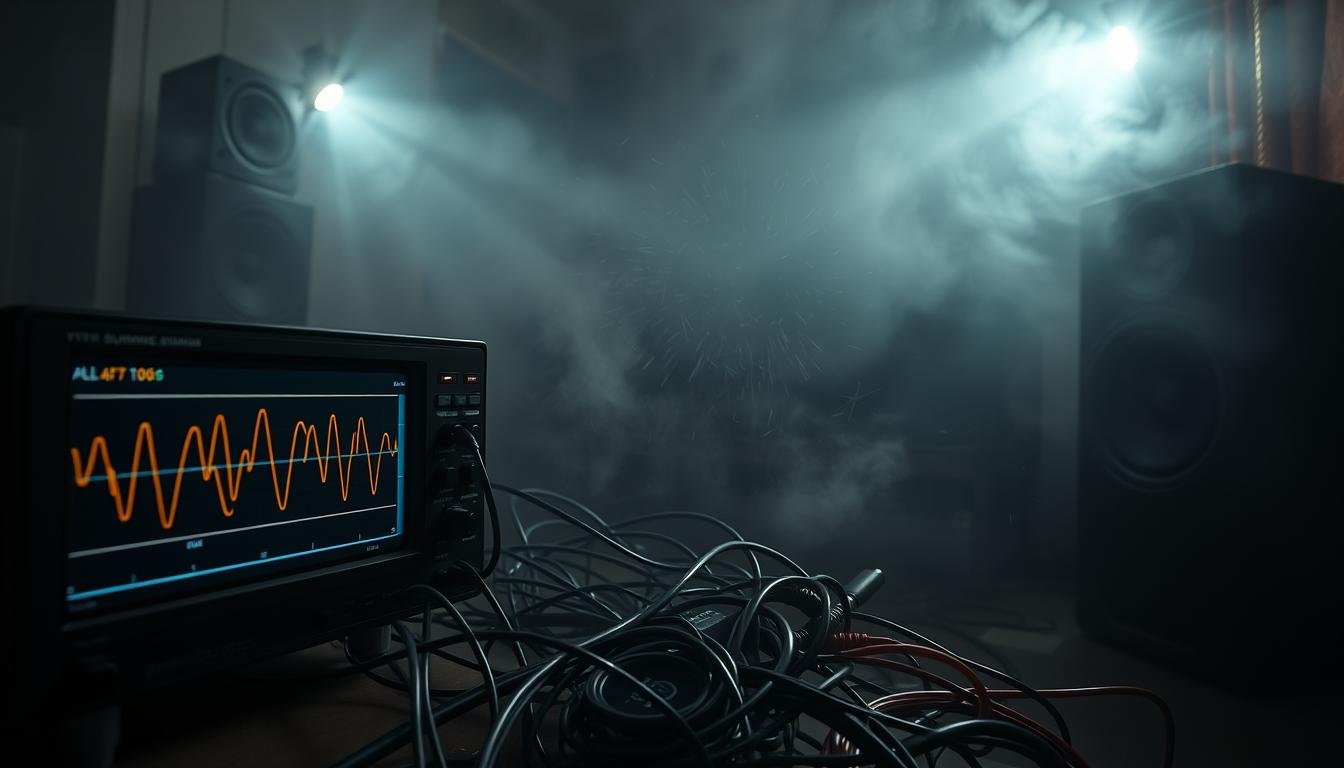Did you know that nearly 40% of home theater enthusiasts experience unexplained crackling or hissing in their audio systems within the first year of ownership? This frustrating phenomenon, often dismissed as a minor glitch, can degrade even high-end setups. Static interference isn’t just background noise—it’s a symptom of deeper issues that, if ignored, may harm your speakers or equipment over time.
Unlike clear audio signals, static disrupts your listening experience with random distortions. These irregularities can stem from faulty wiring, electromagnetic interference, or even nearby electronics. Whether you’re using basic computer speakers or a premium surround sound system, identifying the root cause early is critical. Left unchecked, persistent static could lead to costly repairs or replacements.
Proper diagnosis involves understanding how your home setup interacts with its environment. For example, issues like loose connections often mimic more complex problems. If you’ve encountered similar challenges, our guide on common preamplifier issues offers complementary strategies to refine your troubleshooting process.
Key Takeaways
- Static interference causes irregular crackling or hissing, degrading audio clarity.
- Ignoring static noise risks long-term damage to speakers and equipment.
- Differentiating between normal audio signals and static is crucial for diagnosis.
- Interference sources range from wiring flaws to electromagnetic disturbances.
- Early detection prevents costly repairs and maintains optimal sound quality.
Identifying the Root Causes of Static Interference
Have you ever wondered why your home theater suddenly buzzes during a quiet scene? Static noise often stems from three primary culprits: environmental disruptions, hardware flaws, or software conflicts. Pinpointing these sources requires methodical observation and basic technical knowledge.

Environmental Disruptions: EMI and RFI
Electromagnetic interference (EMI) occurs when devices like microwaves or Wi-Fi routers emit waves that clash with your audio signals. Urban areas face heightened risks due to dense electronic networks. Similarly, radio frequency interference (RFI) from broadcast towers or Bluetooth gadgets introduces erratic crackling, especially in systems near windows or exterior walls.
Hardware Flaws: Cables and Grounding
Frayed cables or loose connections act like clogged arteries for sound signals. Even minor damage can distort bass tones or create humming. Older homes often lack proper grounding, allowing electrical noise to build up in speakers. Testing wires with a multimeter helps identify weak spots.
Internal Components and Software Glitches
Dust accumulation inside equipment disrupts contact points, while aging capacitors generate background hissing. Outdated drivers or incompatible audio software may also misinterpret digital signals, producing static. Regular maintenance and firmware updates minimize these problems.
How to Diagnose Static Interference in Your Surround Sound
Unwanted noise in your audio setup can transform movie nights into frustrating detective work. Effective diagnosis requires a methodical approach that eliminates variables while prioritizing safety.

Conducting Systematic Troubleshooting Steps
Always power down your equipment before inspection to avoid electrical hazards. Begin by disconnecting the subwoofer – its low-frequency hum often masks subtler static sources. If the distortion persists, systematically unplug other components like streaming boxes or gaming consoles.
Test each speaker individually using different cables. Rotate them between channels to determine if the issue follows the hardware or stays location-specific. This process reveals whether you’re dealing with faulty connections or compromised devices.
Isolating Devices and Checking Connections
Strip your system to its most basic configuration – just the audio receiver and one speaker. Gradually reconnect components while monitoring for distortions. This step-by-step method exposes problematic devices that introduce noise when added to the chain.
Inspect every cable for frayed shielding or bent connectors. Pay special attention to connections near heat sources or high-traffic areas. A loose wire behind your entertainment center could be the source of persistent buzzing.
Practical Tips for Reducing and Preventing Static Noise
Static disruptions in your audio setup don’t have to be permanent. Strategic upgrades to your equipment configuration and proactive maintenance can significantly reduce unwanted noise. Let’s explore actionable solutions to preserve your system’s clarity.
Improving Cable Quality and Equipment Setup
Shielded cables act as armor against electromagnetic disturbances. Opt for braided copper shielding for critical connections like subwoofers or center channels. Separate power cords from audio wires by at least 12 inches to prevent cross-interference.
| Solution | Benefit | Tools Needed |
|---|---|---|
| Shielded RCA cables | Blocks 85% of RFI | Cable tester |
| Power conditioner | Stabilizes voltage | Multimeter |
| Cable risers | Prevents floor interference | Adhesive hooks |
Implementing Ground Loop Prevention Techniques
Plug all devices into a single grounded outlet using a quality power strip. For systems spanning multiple rooms, install voltage filters between components. Test coaxial connections by temporarily disconnecting cable boxes – persistent hissing often indicates ground loop issues.
Schedule quarterly inspections of speaker terminals and wire insulation. Replace any cracked or oxidized connectors immediately. For complex setups, consider professional grounding audits to identify hidden problems.
Conclusion
Static interference can turn premium audio into a frustrating experience. You now possess the skills to pinpoint electromagnetic disruptions, damaged cables, or grounding flaws using systematic troubleshooting. Regular maintenance – like cleaning connections and replacing worn wires – prevents most recurring issues before they escalate.
Strategic equipment placement and shielded cables create a defense against environmental noise. When persistent static resists DIY fixes, professional technicians can resolve complex hardware or software conflicts without risking further damage.
Your surround sound system thrives on proactive care. Quarterly inspections of speakers and wires, combined with firmware updates, maintain clarity for years. By addressing problems early, you protect both your investment and immersive listening experiences.
FAQ
What causes static or humming sounds in surround sound systems?
Static or humming often stems from electromagnetic interference (EMI), radio frequency interference (RFI), damaged cables, or grounding issues. Nearby electronics like Wi-Fi routers, smartphones, or fluorescent lights can emit disruptive signals. Faulty wiring or poor connections between components may also trigger noise.
How do I check if cables are causing interference?
Inspect cables for visible wear, fraying, or loose connectors. Swap suspect wires with shielded, high-quality alternatives to test for improvements. Ensure cables aren’t coiled or routed near power sources, as this amplifies interference. Tighten connections and verify proper grounding for all devices.
Can software issues create static in audio systems?
Yes. Outdated firmware, corrupted drivers, or incorrect settings on AV receivers, soundbars, or computers can distort audio signals. Update software via manufacturer websites and reset devices to factory defaults if needed. Check input/output configurations to rule out mismatched formats.
What steps help isolate the source of radio frequency interference?
Power down nearby electronics like cordless phones, microwaves, or LED lights one at a time to identify culprits. Move wireless routers or smart home devices away from audio equipment. Use ferrite cores on cables to block RFI. Test systems in different rooms to confirm environmental factors.
How do ground loops contribute to static, and how can I fix them?
Ground loops occur when multiple devices have conflicting electrical paths, creating a humming noise. Use a ground loop isolator or plug all components into the same power strip. Ensure proper grounding for outlets and avoid daisy-chaining power cords. Lifting the ground on one device (if safe) may also resolve it.
When should I consider replacing audio hardware due to static issues?
If troubleshooting cables, grounding, and software doesn’t resolve noise, internal component failures like blown capacitors or faulty amplifiers might be the cause. Test speakers with another system to confirm functionality. Consult a technician for repairs or replacements if hardware defects are suspected.


